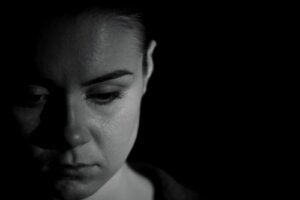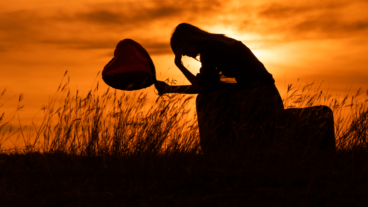The Difference Between Pain and Suffering


Written and verified by the psychologist Gorka Jiménez Pajares
There may have been times you’ve wondered what the difference is between pain and human suffering.
Pain and suffering have a meaning that goes beyond the negative element of the mechanism of feeling pain, as well as the passivity or receptivity of the body and mind.
In fact, there are pains that cause as much or more suffering than the physical, those that mercilessly tear the tissues of the mind and produce dissociated fragments in the soul. For Di Pierro, true pain occurs when you experience the genuine presence of discomfort, while other kinds are only signs, echoes, or pre-announcements of pain.
“Pain is the consequence of a state of local dysfunction in living tissue, the consequence of a stimulus that causes a sensation of pain, but that also provokes regulatory responses such as reflexes, and can also include emotions on its own.”
-Antonio Damasio-

The phenomenology of pain and suffering
The experience of pain lies in discomfort. It’s analogous to ‘feeling bad’. In addition, this experience is usually linked to the feeling of suffering, which exceeds and goes beyond mere pain. In fact, suffering is the water that overflows the river, flooding everything in its path.
“The main differential element between pain and suffering is that the primary meaning of pain is not exhausted in its function of relieving discomfort.”
-Di Pierro-
Pain or suffering?
According to Stanislaw Grygiel, a historian of Polish origin, “In pain, then, not only illness is revealed to man, but also the factual state of his being. In pain, illness, and death to which the disease subsides, the memory is awakened, which not only speaks of past ills and lost moments of happiness, but also foresees the afflictions to come: this certainly repeats itself and, moreover, ends with death”.
In this sense, it should be noted that, curiously, when we talk about pain, we’re usually referring to physical pain. So, why is it difficult for us to refer to the pain of the soul?
For philosophers like Buytendijk, the difference between pain and suffering could be that the former refers to a bodily level, while the latter alludes to the heart-rending cries of the soul. Indeed, it involves the entire personal structure of the human being.
“There is no physical pain that manifests itself in the entire body.”
-Buytendijk-
Suffering and the connection with being
Pain and pleasure. The presence of one is unnecessarily accompanied by the absence of the other. Moreover, it’s said they have asymmetric structures.
Buytendijk described four negative experiences of displeasure:
- The unpleasant impressions that we obtain through our senses.
- The vital feelings of displeasure associated with our basic needs. For example, cold, tiredness, hunger, or thirst. Also, their subjective transformations into feelings.
- Acute and chronic pain that’s predominantly physical. Bodily pain is included here.
- Spiritual suffering. This is diffuse pain. It’s hard to define and difficult to see where it begins and ends, unlike bodily pain.
“Spiritual suffering is a form of pain of existence itself, of the soul and is related to a justly painful or painful event, which is why it is also commonly called pain.”
-Di Pierro-

Pain and suffering
Therefore, it can be said that suffering in the soul puts you in contact and in conversation with your body. In fact, it allows you to ask yourself about the totality of your being. It should also be mentioned that (bodily) pain and (spiritual) suffering don’t necessarily manifest together since bodily pain doesn’t always disturb the spirit.
In conclusion, alluding to the neuroscientist, Antonio Damasio, emotions, despite the fact that they can be caused by the same stimulus, constitute a different consequence of the same cause. Thus, later, you come to know that you’re in pain and that you’re experiencing an emotion associated with it, connecting your consciousness to the present moment.
“The philosophy that is not born in suffering does not see the world as a reality oriented towards transcendence, it erases the freedom and responsibility of the human person. Such a philosophy can be anything but a friendship of wisdom.”
-Grygiel-
There may have been times you’ve wondered what the difference is between pain and human suffering.
Pain and suffering have a meaning that goes beyond the negative element of the mechanism of feeling pain, as well as the passivity or receptivity of the body and mind.
In fact, there are pains that cause as much or more suffering than the physical, those that mercilessly tear the tissues of the mind and produce dissociated fragments in the soul. For Di Pierro, true pain occurs when you experience the genuine presence of discomfort, while other kinds are only signs, echoes, or pre-announcements of pain.
“Pain is the consequence of a state of local dysfunction in living tissue, the consequence of a stimulus that causes a sensation of pain, but that also provokes regulatory responses such as reflexes, and can also include emotions on its own.”
-Antonio Damasio-

The phenomenology of pain and suffering
The experience of pain lies in discomfort. It’s analogous to ‘feeling bad’. In addition, this experience is usually linked to the feeling of suffering, which exceeds and goes beyond mere pain. In fact, suffering is the water that overflows the river, flooding everything in its path.
“The main differential element between pain and suffering is that the primary meaning of pain is not exhausted in its function of relieving discomfort.”
-Di Pierro-
Pain or suffering?
According to Stanislaw Grygiel, a historian of Polish origin, “In pain, then, not only illness is revealed to man, but also the factual state of his being. In pain, illness, and death to which the disease subsides, the memory is awakened, which not only speaks of past ills and lost moments of happiness, but also foresees the afflictions to come: this certainly repeats itself and, moreover, ends with death”.
In this sense, it should be noted that, curiously, when we talk about pain, we’re usually referring to physical pain. So, why is it difficult for us to refer to the pain of the soul?
For philosophers like Buytendijk, the difference between pain and suffering could be that the former refers to a bodily level, while the latter alludes to the heart-rending cries of the soul. Indeed, it involves the entire personal structure of the human being.
“There is no physical pain that manifests itself in the entire body.”
-Buytendijk-
Suffering and the connection with being
Pain and pleasure. The presence of one is unnecessarily accompanied by the absence of the other. Moreover, it’s said they have asymmetric structures.
Buytendijk described four negative experiences of displeasure:
- The unpleasant impressions that we obtain through our senses.
- The vital feelings of displeasure associated with our basic needs. For example, cold, tiredness, hunger, or thirst. Also, their subjective transformations into feelings.
- Acute and chronic pain that’s predominantly physical. Bodily pain is included here.
- Spiritual suffering. This is diffuse pain. It’s hard to define and difficult to see where it begins and ends, unlike bodily pain.
“Spiritual suffering is a form of pain of existence itself, of the soul and is related to a justly painful or painful event, which is why it is also commonly called pain.”
-Di Pierro-

Pain and suffering
Therefore, it can be said that suffering in the soul puts you in contact and in conversation with your body. In fact, it allows you to ask yourself about the totality of your being. It should also be mentioned that (bodily) pain and (spiritual) suffering don’t necessarily manifest together since bodily pain doesn’t always disturb the spirit.
In conclusion, alluding to the neuroscientist, Antonio Damasio, emotions, despite the fact that they can be caused by the same stimulus, constitute a different consequence of the same cause. Thus, later, you come to know that you’re in pain and that you’re experiencing an emotion associated with it, connecting your consciousness to the present moment.
“The philosophy that is not born in suffering does not see the world as a reality oriented towards transcendence, it erases the freedom and responsibility of the human person. Such a philosophy can be anything but a friendship of wisdom.”
-Grygiel-
All cited sources were thoroughly reviewed by our team to ensure their quality, reliability, currency, and validity. The bibliography of this article was considered reliable and of academic or scientific accuracy.
-
Cabòs Teixidó, J. (2013). Fenomenología del Sufrimiento. Por una comprensión filosófica a partir de la obra de Arthur Schopenhauer.
-
Di Pierro, E. G. (2018). Apuntes para una fenomenología del dolor y el sufrimiento. Revista del Centro de Investigación de la Universidad la Salle, 13(50), 13-30.
This text is provided for informational purposes only and does not replace consultation with a professional. If in doubt, consult your specialist.







